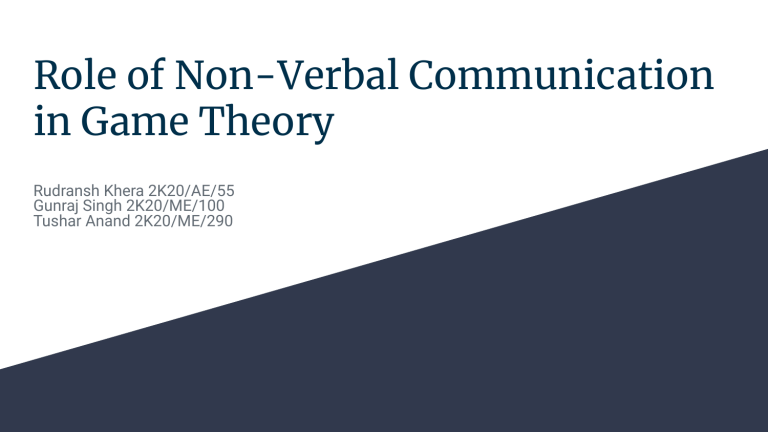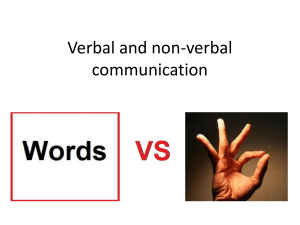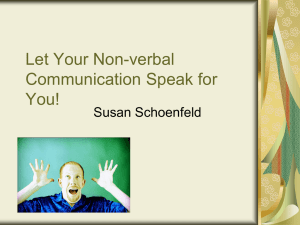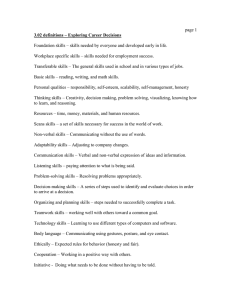
Role of Non-Verbal Communication in Game Theory Rudransh Khera 2K20/AE/55 Gunraj Singh 2K20/ME/100 Tushar Anand 2K20/ME/290 Introduction ● ● ○ ○ ○ ○ ○ ○ Non-verbal communication refers to the transmission of information and meaning through non-verbal cues, rather than through spoken or written words. It plays a crucial role in human interaction and can convey a wide range of emotions, attitudes, and intentions. Some common forms of non-verbal communication include: Facial Expressions Body Language Gestures Eye Contact Tone of Voice Physical Appearance Game Theory Game theory, a mathematical framework for strategic decision-making, can be applied to non-verbal communication to analyze how individuals use gestures, facial expressions, and body language strategically. It helps interpret the signaling, credibility, cooperation, and competition in non-verbal interactions. Game theory models trust, reputation, sequential decision-making, persuasion, and influence through non-verbal cues. It's useful in understanding how individuals coordinate, establish social norms, and resolve conflicts through non-verbal communication. While the application of game theory to non-verbal communication is context-dependent and complex, it offers valuable insights into strategic aspects of non-verbal interaction. Types of NVC in the context of Game Theory ● Non-Verbal Communication can have a diverse amount of implications while being utilised in Game Theory. ● For example, a non-verbal cue could be complementary, contradictory, substitutive, supplementary etc. with reference to the inherent message the user might be wishing to convey. ● It can also be an effective tool to either accentuate or undermine the same. Negotiation Negotiation tactics, rooted in game theory, are crucial for strategic decision-making. Body language and gestures are powerful tools in negotiations, conveying intent, trustworthiness, and emotions. Game theory principles apply as negotiators strategically signal their positions and influence opponents. Non-verbal cues like maintaining eye contact, open postures, or even strategic deception through expressions and gestures impact the negotiation's direction and outcomes. Understanding and utilizing these cues effectively can foster trust, manage power dynamics, and create rapport, enhancing the overall negotiation process. Body language and gestures utilised during the negotiation process can play an imperative role during negotiations. There are numerous classical examples that can be used to analyse this very phenomenon. The Godfather Negotiation Scene NVC in Game Theory Wagers Game theory in practise can be realised in situations wherein one has to anticipate the move that the other person may or may not commit to. For example, in games like chess and poker where non-verbal cues can be effective carriers of messages, one has to be conscious of the succinct non verbal communication being made to and from both people. Poker Case ● Non-verbal communication plays a significant role in poker games. In poker, players use various non-verbal cues to convey false information or read their opponents' intentions. Here are some key aspects of non-verbal communication in poker: ○ ○ ○ ○ ○ ○ Poker Face Eye Contact Body Language Chips & Stacks Timing & Speed Staring down opponents Conclusion In summation, non-verbal communication can act as a double edged sword while utilisation during game theory practices. It is entirely dependent whether or not it is effectively utilised People need to be aware of the differentiation between perception, interpretation and reaction of non verbal cues




